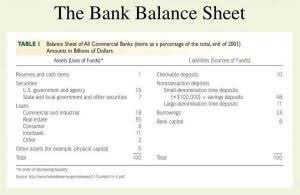Content

As you might imagine, one FOB term or the other shifts risk of loss entirely to one party or the other. Depending on how frequently the buyer or seller maintains the title of goods throughout the shipping process, several important costs must be considered and covered. Freight collect means the person receiving the shipment is responsible for all freight charges.

If you’re a small business owner looking to save on sending costs or a logistics manager trying to optimize your supply chain, understanding FOB sending can be a game-changer. Free Carrier Agreement (FCA) provides a similar split of responsibilities between buyers and sellers. In FCA, the buyer is also responsible for any charges that occur at the origin port, such as pre-carriage inspections. The risk transfer for DDP occurs when the goods are made available to the buyer at the final destination. DDP also requires sellers to transport goods to the final location and pay for any relevant import customs formalities. Additionally, the buyer doesn’t have the opportunity for the delivery to be made to its final destination.
FOB Shipping Point Terms: Insurance
Instead, the goods arrive at their destination port, and the buyer must arrange any onward carriage to the warehouse. Previously, the Incoterms suggested that a ship’s rail serves as the point where the goods were loaded onto the vessel. However, under Incoterms 2020, the loading is fulfilled only when the goods are on board the ship and the cables are no longer holding the container. In the FOB Incoterm rules, it is essential to note that insurance is not obligated to the buyer or seller. Instead, if there is an insurable interest on board, the insurance costs are usually covered in the terms of sale. When your paperwork says FOB [origin], the buyer assumes ownership and control when the products leave the shipping point.

As a business considering FOB sending practices, it’s important to understand FOB terms for smooth transactions and accurate accounting. In reality, “freight on board” isn’t an industry-recognized term, defined by the Uniform Commercial Code (UCC), or mentioned in any version of Incoterms. Free on Board is an Incoterm that evenly splits the responsibilities between buyers and sellers. Sellers are not held responsible for any in-transit loss once the goods are on board. Finally, the seller is typically knowledgeable on all export documents required in their own country, making the process fairly straightforward for them.
Difference between Free Onboard (FOB) Shipping Point and Free Onboard Destination
“Freight collect” refers to the legal fact that the buyer is responsible for the freight charges. “FOB Origin” refers to the legal fact that the buyer assumes title of the goods the moment the freight carrier picks up and signs the bill of lading (BOL) at the origin pick-up location. Purchase orders, contracts, and other sending documents specify FOB terms between buyers and sellers. As the Bookkeeping Services Examples buyer has the option to be in charge of handling the shipping from the origin port (in FOB Origin), it provides much more flexibility in hunting down the best prices. This also allows them to build a relationship with a freight forwarder to make the delivery process smooth, with less dependence on the seller. Furthermore, the buyer can select one freight forwarder for the entire shipment.
Realistically, it is quite difficult for the buyer to record a delivery at the shipping point, since this requires proper notification into the buyer’s inventory management system from an outside location. From a practical perspective, recognition of receipt is instead completed at the receiving dock of the buyer. Thus, the sale is recorded when the shipment leaves the seller’s facility, and the receipt https://kelleysbookkeeping.com/best-accounting-software-for-quicken/ is recorded when it arrives at the buyer’s facility. This means there is a difference between the legal terms of the arrangement and the typical accounting for it. The prepaid freight agreement says that the seller is responsible for the freight charges until the order arrives at the buyer’s destination. Then, the seller sends an invoice to the buyer for reimbursement when the items are delivered.
Free on Board: Shipping Point
The earliest ICC guidelines were published in 1936, when the rail was still used – goods were passed over the rail by hand, not with a crane. Incoterms last included the term “passing the ship’s rail” before its 2010 publishing. Since the buyer takes ownership at the point of departure from the supplier’s shipping dock, the supplier should record a sale at that point. The buyer should record an increase in its inventory at the same point (since the buyer is undertaking the risks and rewards of ownership, which occurs at the point of departure from the supplier’s shipping dock). Also, under these terms, the buyer is responsible for the cost of shipping the product to its facility.
- From a practical perspective, recognition of receipt is instead completed at the receiving dock of the buyer.
- In the meantime, start building your store with a free 3-day trial of Shopify.
- The second portion indicates who will pay for the charges and fees related to the shipment of the goods.
- Before you can obtain an accurate quotation from your logistics company, it is best to confirm the carton dimensions and weight and address where the collection with your supplier with taking place.
- Having a complete understanding of your shipping rights and responsibilities at the outset of your agreement will save significant time and headaches down the road.
- As with all Incoterms, FOB does not define the point at which ownership of the goods is transferred.

